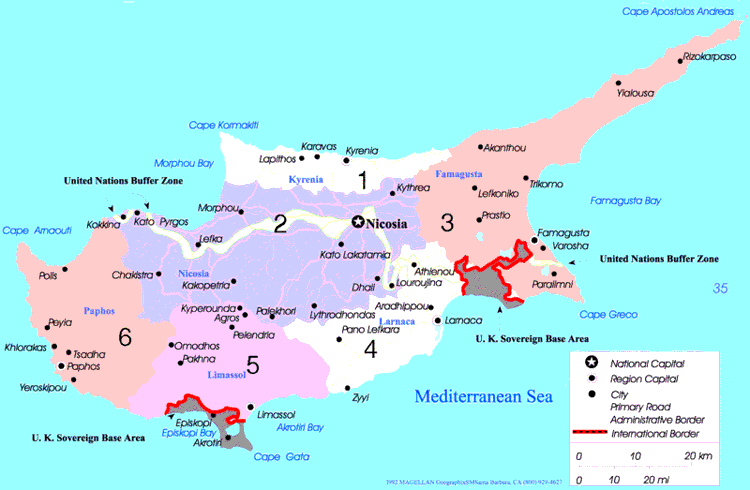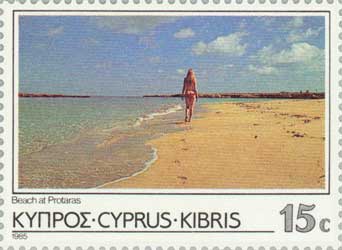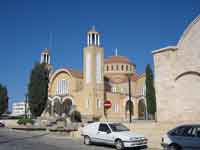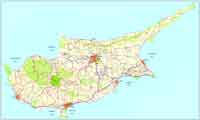|
|
 Paralimni (Greek ) is a town situated in the South East of Cyprus, a little way inland, within the Famagusta District. Since the Turkish occupation of Northern Cyprus, it has increased in size and status, due to the migration of many refugees fleeing from the North. Many of the people who work in the tourist industry of Protaras live in Paralimni, which is the now temporary administrative centre of the Famagusta District and the biggest municipality of the free area of the district. The word Paralimni means "settlement by the lake". Historically, Paralimni was built on the shores of a shallow lake, which filled with water only in the wintertime. Architecturally, Paralimni is nondescript, little if anything remains of the original village. Outside of the town centre the houses are not very attractive, little more than squat rectangular blocks. This is more than compensated for by their very attractive gardens, especially when the trees are in blossom or fruit. The countryside surrounding Paralimni has rich red soil and is famous for its picturesque windmills - used to draw water from underground aquifers to irrigate the surrounding land. Sadly, many of these are now derelict having been replaced by electric or diesel-powered pumps. Before the rise of tourism, the rich agricultural land surrounding Paralimni was the source of Paralimni's wealth, and is still of great importance. In the beginning of the 20th century, as a result of reclamation work, the whole of the lakebed was reclaimed for agricultural purposes. Paralimni has not always been where it is now. Originally it was built on a hill, which was situated between Dherinia and its present location. However, in the 15th century, it was moved inland to avoid detection by the sea pirates. It is said that the first people to settle at Paralimni arrived just after the capture of the near town of Famagusta by the Ottoman Turks in 1571. The first settlement was called Saint Demetrius and this place still bears his name today. Not far from Paralimni, at a location known today as Protaras, stood the old city-state of Leukolla. The city possessed a small safe harbour where the Athenian Demetrius Poliorketes in the year 306 B.C. sought refuge, lying in wait for Ptolemaios, one of the successors of Alexander the Great. In the ensuing battle Ptolemeos was defeated and fled to Egypt, leaving Cyprus for a while in the hands of Demetrius. The first inhabitants of Paralimni were farmers. The location of Paralimni is favoured by a very mild climate which is conducive to the early-in-the year produce of vegetables and potatoes. Paralimni has lovely beaches and the most well known in the area is Fig Tree Bay in Protaras area. Protaras is part of Paralimni which is more familiarly referred to as "the land of windmills" maintaining the nostalgic quality of the past. Picturesque but geared for tourism, Prtoaras has lovely sandy white beaches, and man/ restaurants, pubs and clubs. In 1986, after a referendum, Paralimni was declared a municipality with the name "Paralimni". In May 1986 the first elections were held for the office of mayor and municipal council. Nikos Vlittis was elected the first mayor and he still remains as the Mayor of Paralimni. Enosis Neon Paralimni FC, which plays in Cypriot First Division is the football team of the town. Michalis Konstantinou, the famous football striker of Olympiacos, was born in Paralimni. He also began his career from the team of the town.
Kyriakou Pelagia, from Paralimni - Famagusta, a singer of traditional cypriot music in the Theater of Kato Polemidia. Photo : Augusta Stylianou Artist
Agios Georgios Church, Agia Varvara Church, Agios Georgios Church, Links Paralimni Official Municipality Images Cyprus, Famagusta District Retrieved from "http://en.wikipedia.org"
 |
|
||||||||||||||





